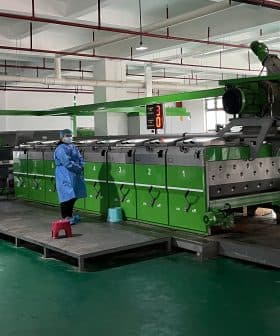Olive Oil Production in China Reaches 5,000 Tons
While still a relatively small olive oil supplier, China is looking to expand domestic production to satisfy a growing market for healthier oils.
China’s olive oil production increased by 75 percent this year to 5,000 tons, with 25 mills employing 15,000 people in provinces like Gansu and Shaanxi. Despite this growth, domestic production only meets 12 percent of China’s needs, with imports from Spain and Italy making up the majority.
Twenty-five mills in China managed to produce 5,000 tons of olive oil this year according to the International Olive Council citing official sources, a 75 percent increase over the previous season.
Olive oil production in the world’s most populous country employed approximately 15,000 people, mostly in the Gansu, Shaanxi and Sichuan provinces. The amount of land devoted to olive production was reported to amount to 86,000 hectares.

Domestic production represents about 12 percent of the country’s current needs, with imports last year close to 36,000 tons, the IOC said in its August newsletter. Most of the imports were from Spain (81 percent), followed and Italy (13 percent).
Olive oil consumption in China remains exceedingly small compared to other major markets like the United States, for example, which imports 10 times as much olive oil from abroad.
In other IOC news, Tunisia became the first country to execute the new International Agreement on Olive Oil and Table Olives, an unsurprising development following the recent election of Tunisian Abdellatif Ghedira as the IOC’s executive director.









